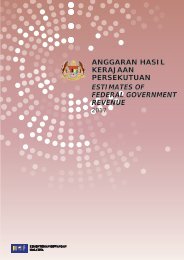WEALTH
2c0esX1
2c0esX1
You also want an ePaper? Increase the reach of your titles
YUMPU automatically turns print PDFs into web optimized ePapers that Google loves.
MICRO<br />
» IT’S THE<br />
BEGINNING OF THE<br />
END OF THE<br />
BEGINNING «<br />
RICHARD A. MILLER<br />
Yet it doesn’t have to be this way. Broad-acting<br />
preventive medicines could dramatically<br />
increase the period of life spent in good health<br />
– our healthspan. This ray of hope reflects<br />
progress in the science of aging, or geroscience.<br />
We now possess reams of data about how<br />
healthy lifestyles can lower risks of age-related<br />
diseases. Geroscientists have also discovered<br />
that altering certain genes can significantly<br />
slow time’s toll in animals to enhance<br />
longevity and health in later life.<br />
Interventions that slow the rate of aging<br />
are now a realistic prospect. They would<br />
represent a “superefficient” way to attack the<br />
diseases of aging, says Goldman, because they<br />
would delay all of the diseases at once to<br />
extend the period of healthy life. His 2013 study<br />
showed that preventive interventions that only<br />
modestly delay aging could achieve much<br />
greater reductions in disability and per capita<br />
medical costs than the reactive approach. For<br />
example, according to research by Goldman, a<br />
drug that increased life expectancy at age 51<br />
by only 2.2 years in 2030 could, by 2060, boost<br />
the number of healthy, non-disabled older<br />
Americans by more than 11 million.<br />
To be sure, anti-aging interventions would<br />
likely increase the number of elderly people<br />
eligible for government entitlement programs,<br />
increasing the programs’ total costs. But<br />
Goldman’s study showed these costs could be<br />
readily offset by slightly raising eligibility ages<br />
for the programs to reflect the fact that older<br />
people would be healthier and living longer.<br />
HOW TO DELAY AGING<br />
Laboratory findings that suggest aging can be<br />
slowed date to 1935, when scientists discovered<br />
that putting rats on very-low-calorie diets<br />
extends their lifespans by a third or more.<br />
Later studies showed that such calorie<br />
restriction, or CR, can delay aging in many<br />
species. Importantly, it also makes animals<br />
healthier in their extended later years.<br />
For decades, CR remained little more<br />
than a lab curiosity. Its dietary regimen was<br />
demanding and there was no definite proof it<br />
worked in humans; its mechanism of action<br />
was too obscure to suggest drugs that would<br />
mimic its benefits. This situation began to<br />
change in the 1990s, however, when scientists<br />
discovered gene mutations in worms, flies<br />
and mice that extend healthy lifespan much<br />
as CR does. Analyzing what these mutations<br />
do within cells has suggested that there’s a<br />
latent, anti-aging capacity in the body<br />
engendered by networks of interacting genes.<br />
These networks can be switched on by CR and<br />
by mutations in specific genes, most notably<br />
those that govern growth early in life. Probing<br />
the networks’ molecular constituents has<br />
suggested that certain drugs might tap them<br />
to slow aging.<br />
In 2003, the U.S. National Institute on Aging<br />
launched a program to test such drugs’ effects<br />
on lifespan in mice. Six years later, it yielded an<br />
unprecedented success: rapamycin, a<br />
medicine used to prevent rejection of<br />
transplanted organs, robustly extended life<br />
expectancy in elderly mice by about a third.<br />
Subsequent studies have shown that the drug<br />
also reduces cancer, neurodegeneration and<br />
other ills while improving liver, heart, kidney<br />
and muscle function in mice. Rapamycin’s side<br />
effects, such as increased blood sugar, may<br />
rule it out as a possible anti-aging drug. But<br />
other candidates include acarbose, a drug for<br />
lowering blood sugar in diabetics, and another<br />
diabetes drug, Metformin, which mimics key<br />
effects of CR while increasing both healthspan<br />
and lifespan in mice.<br />
Rigorously validated anti-aging drugs<br />
would still take many years to develop. Among<br />
other hurdles, scientists must find<br />
“biomarkers” to measure the rate of aging so<br />
that candidate drugs can be tested in relatively<br />
short clinical trials. Still, “it’s the beginning of<br />
the end of the beginning,” in humanity’s long<br />
quest to delay aging, says Richard A. Miller,<br />
professor of pathology at the University of<br />
Michigan. And while the modestly slowed<br />
aging that geroscientists now feel is achievable<br />
wouldn’t repeal the Murphy’s law of aging, it<br />
would profoundly reduce its penalties.<br />
38 • Allianz



